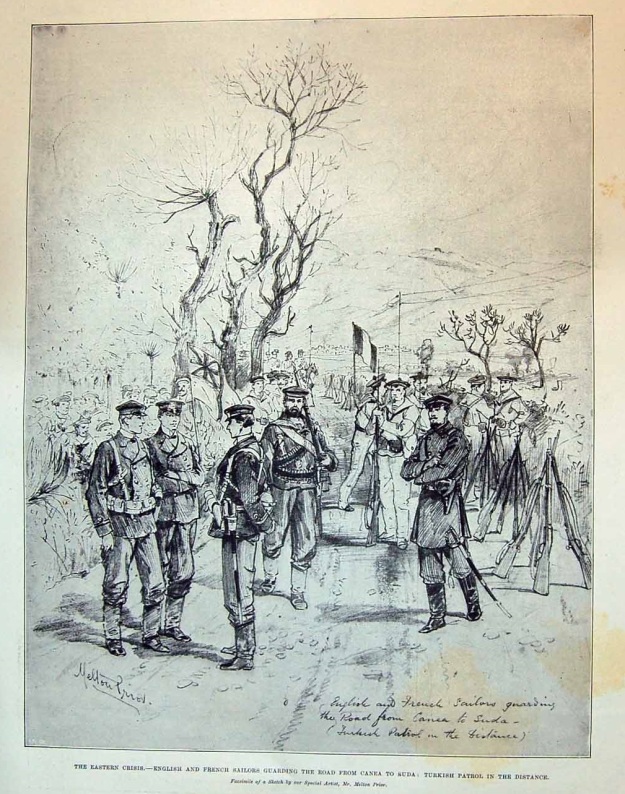The illustration shows the events of 21 February 1897 when European warships opened fire on Cretan Christian insurgents who had hoisted a Greek flag and were threatening to bombard Canea from the hills above the town.
In spite of being instructed to haul down the flag, Crete was then part of the Ottoman Empire and Greece was attempting to annex it without the consent of the European Powers who guaranteed the Greek and Ottoman borders, the Cretans refused. When it became clear that they possessed artillery, given to them by Greek troops who had landed in Crete a few weeks earlier, the Europeans opened fire on the insurgents’ position. After a few minutes firing from the warships the flag came down and the Christians withdrew. More details here.









